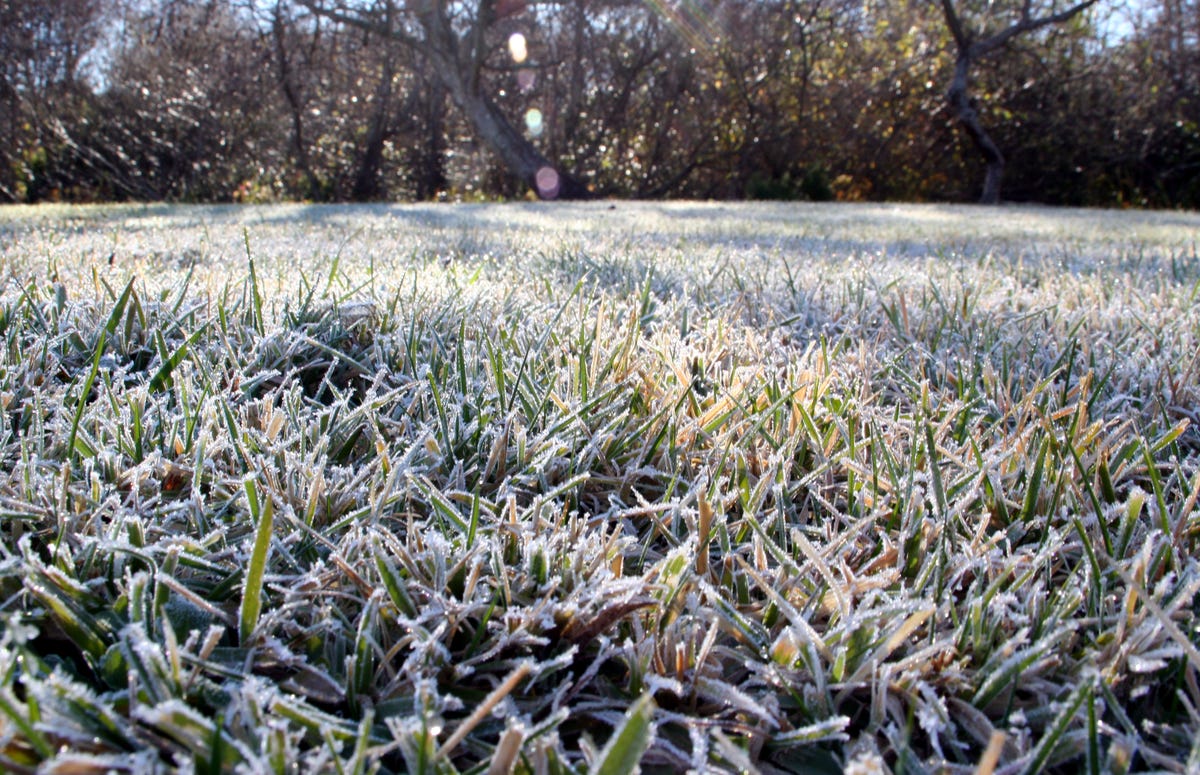There are many ways to help your lawn stay healthy year-round. It starts by mowing it correctly. After all, a healthy lawn will boost your home’s curb appeal and help keep the bug and rodent population down. It can also help save money on your energy bills by reducing solar heat gain.
There’s a myriad of things that can make it difficult to keep your lawn happy. Aside from the heat waves and record-breaking temperatures, other factors like nutrient depletion, bugs and more can make it hard to keep your lawn healthy and prevent it from drying out. But not to worry, because there are a number of effective ways to maintain your lawn every season — even during the hot summer months — and your lawn care doesn’t have to be tedious or costly.
This guide tackles everything you need to keep your lawn looking lush all year, no matter the season. First, let’s kick things off by starting with the basics. (For more lawn care tips, find out how much you can save by switching to an electric mower and how to get your old mower back in shape.)
Sunlight
We often forget that grass is a plant. So, like other plants, the grass in your lawn needs sunlight, water and food to remain healthy. In order to give your yard the best chance to survive in the area you live, pick the type of grass. Like other plants, there are different varieties of grass and each one has different requirements. Some turf-based grasses can do well with only four hours of direct sunlight per day, while others require as much as six hours.
Depending on how your yard is set up and how many trees, shrubs, bushes and other shade-casting plants you have around your home, you may need to use different grass types around your lawn. While some grasses like a bit of shade, others require full sun, meaning it needs access to eight hours of sunlight a day in order to grow properly.
If you don’t know what kind of grass you have or may need, a landscape professional can help you with finding the best type for your yard.
Use a DIY sprinkler system to water your lawn.
Water

Next to sunshine, the next most vital ingredient in getting and keeping a healthy lawn is water. Generally, most grass needs 1 to 1.5 inches of water per week. A smart, automated sprinkler system might be a worthwhile investment, but you can also set up an effective sprinkler system for less than $100.
Using some form of “smart” lawn irrigation system allows you to dial in the water needs for your lawn. It offers features like automatically pushing watering schedules back a few days after a rainfall, tracking the amount of water used for your lawn and only running during the proper time of day, all while ensuring your lawn gets an even distribution of water.
Using a smart watering system, whether that is with an in-ground professionally installed system or a timer on a water hose sprinkler, you can have better control over when the sprinklers run and how much water is used. With some areas of the country experiencing water shortages, be aware of your local restrictions before watering your lawn.
Fertilizer

My yard has never had such a professional look.
The spring is prime time to start fertilizing your lawn. As a rule of thumb, when your grass looks ready for its first cut of the season, it’s ready for fertilizer. After your first application, you need to fertilize once every six to eight weeks until October if you use a slow-release fertilizer.
Your seasonal guide to lawn care

Summer
As tempting as it may be to cut your yard short, but when summer is here, and it’s hot out, the best bet is to keep the grass four inches or taller — after it’s cut. This allows grassroots to grow stronger. You also want to keep applying fertilizer every six to eight weeks.
Summer is also when you need to be proactive about weed control. Use a targeted post-emergent pesticide to keep weeds from sprouting while protecting your grass. You also should have a grub control product on hand to prevent the spread of insect pests like Japanese beetles.
Don’t forget about water during these hot summer months. You and your lawn need water. You’ll want to make sure to water once to twice per week. Hot weather increases water loss due to evaporation, too. Aim to water in the early morning hours when temperatures are relatively cool.
Fall
Continue to water, fertilize and mow on schedule as needed. Maintaining the same schedule each year is vital to keeping your lawn healthy, as fertilizing or aerating too late in the season could restrict nutrient absorption.
At this time, you should overseed if you notice bare patches in your grass from foot traffic, pets or other causes. Early autumn is a critical period to do this because the soil is still warm and moist.
You’ll also want to prepare your grass for the cooler months ahead. As you approach the first frost, continue to reduce the blade height with each cut. By your last mow of the season, your grass should be between 2 and 2.5 inches, which can prevent snow mold.
Winter

You will want to leave grass blades longer to protect them from the cooler weather.
If you live in an area with a cooler climate, maintenance will be much less demanding during the frigid winter months. However, you still need to remain vigilant. For example, prevent undue lawn damage by eliminating foot traffic across it.
And if you must de-ice your walkways, choose a product with calcium chloride. Doing this prevents your grass from incurring salt damage. Once the temperature rises above freezing, make sure to give your lawn a thorough rinsing to flush out any excess salt.
Moreover, when you have to shovel snow from your driveway or sidewalk, avoid placing piles on your grass. All that extra weight can result in soil compaction, creating bare spots in your yard. Meanwhile, if you live in a warmer climate, continue to mow your grass. You also want to leave the blades longer to protect them from the cooler weather.
Ultimately, these tips can help your yard look fantastic no matter the season. Just remember to inspect your yard regularly to assess its health. Noticing and dealing with trouble signs promptly will help prevent further problems down the road.
Spring
Spring is the perfect prep time for a great lawn season. Start by inspecting your yard for any debris or weeds and then promptly removing them. If you notice bare spots, overseed the area with grass seeds, then apply nitrogen fertilizer five weeks after application.
Next, you should tune up your mower for the season. Sharpen its blades, replace its filter and spark plugs, and change the oil if necessary. If you want to buy a mower, choose one that works well for yard size. If you have a yard larger than a quarter acre, then a riding lawn mower will make the job much more manageable, since it likely has a wider cutting width.
When you do your first mow of the season, adjust your mower to its highest cutting setting. Doing this trims the least amount possible, at most one third of each grass blade. With more blade length, grass absorbs more sunlight. This, in turn, promotes root growth. Spring is also an excellent time to aerate your yard. Aerating your lawn allows the fertilizer to reach deep down to the roots of your grass.
A healthy lawn that has been properly maintained and treated throughout the year will take off and look a luscious green as spring rains come. This can mean you’ll be doing more mowing and can become quite a time commitment. One way to ensure a consistent cut is with a robot lawn mower. While these can be great devices, there are some things to consider before buying a robo mower. But if you find that it is a good fit for your lawn, a robot lawn mower can save you hours of mowing.




















+ There are no comments
Add yours